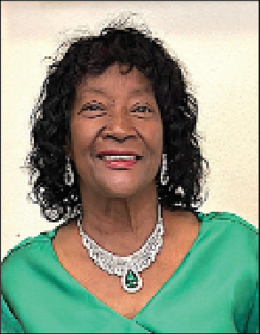Arboretum Paths: How to have a free garden
Published 7:00 am Wednesday, April 22, 2015

Field trips can introduce you to many interesting native plants. This green milkweed (Asclepias viridis), a monarch butterfly host plant, was seen this weekend at the Harrell Prairie Botanical Area in the Bienville National Forest near Forest, Mississippi. (Photo by Pat Drackett).
Freshly returned from last week’s annual conference of the Mississippi Native Plant Society, my head is brimming with ideas, and I’ve gained a hearty dose of enthusiasm following two days of field trips and presentations. Many of our conversations focused on plant propagation, and producing more plants from seed, cuttings, layering, or division, and the opportunity to rescue plants from areas about to undergo construction.
Dave Thompson, the current president of the Native Plant Society, who is with the Mississippi Department of Transportation, discussed how reduced mowing along state managed roads can not only save taxpayers money, but encourages wildflowers. It is interesting to consider that many rare plants occur along our interstate and highway roadsides and passersby are unaware of the riches found there. Perhaps they are traveling by a population of prairie parsley, which we toured this weekend. It is found so far in only six areas of Mississippi. Pink coreopsis, an attractive little wildflower, is found only in two locations in our state. One occurs at a Jackson County interstate interchange and the other is found at a Crosby Arboretum natural area.
Another exciting presentation was given by Heather Sullivan, state botanist and curator of the herbarium at the Mississippi Museum of Natural Science. She discussed the Mississippi Natural Heritage Program, which identifies the state’s most significant natural areas through conducting inventories, including recording rare plant species. Heather discussed the system of rankings of the plants on the state “watch” or “tracking” lists, and informed us that a long-anticipated update of Mississippi’s “special plants” will be available soon.
Heather travels statewide to record the occurrence of these special plants, sometimes spurred by a call from a person with an eagle eye who has spotted something unusual and emailed her a photo. Following her presentation, we traveled with her to several areas where we saw plant species on the state list. We enjoyed taking many pictures, and learning new plants!
If you attended our recent annual lecture by author Rick Darke, you will know that he spoke of the fact that many of the plants in their home landscape had been given to them by friends, transplanted from other sites, or propagated from material already existing on their property. Basically, they have a “free” garden! Many of us are familiar with “passalong” plants, as well as the joy that comes along with sharing our plants with gardening friends. I’ve listened to many touching stories of those who are carefully tending a treasured plant from a favorite relative, serving to remind them of that person and sometimes the source of where their love of gardening originated.
But propagating plants can sometimes be daunting. Consider that with hundreds upon hundreds of possible species, each has its own specific requirements for timing of taking cuttings or starting new plants from seed. Some, like the natives red buckeye and Texas star hibiscus, can be planted when the seed is fresh, and others have much more difficult requirements. Propagation methods can raise range from complex greenhouse systems to simple backyard methods such as converting plastic gallon milk jugs or soft drink bottles, cutting out the bottoms and installing them over tender cuttings to provide the constant moisture needed.
The first year I was at the Arboretum I remember being astounded to see several dozen tiny blue flag iris sprouting in one container, sown by grounds manager Terry Johnson. He is equally proud of his results each year with red star hibiscus as well as its less common white form, which he propagates for our Aquatic Plant Sale in July.
Learn how you can make more plants! Senior Curator Jill Mirkovich will present a Plant Propagation Workshop this Saturday, April 25from 1:00 to 2:30 p.m. Jill will cover propagation methods and facilities, timing, and materials. Be prepared to get your hands dirty! Want to grow your own vegetables, but lack the space, time, or energy? After Jill’s program, Brenda Myers, Certified Square Foot Gardener and Master Gardener, will reveal just how easy and fun Square Foot Gardening can be. Both of the programs are free to our Arboretum members, and only $5 for non-members, so plan to make a day of it and call now to pre-register and guarantee your seat.
The Arboretum is open Wednesdays through Sundays from 9 a.m. to 5 p.m. and is located in Picayune, off I-59 Exit 4, at 370 Ridge Road (south of Walmart and adjacent to I-59). For more information about our programs and events, see the website atwww.crosbyarboretum.msstate.edu or call 601-799-2311.
FOR FURTHER EXPLORATION: If you see “something special”, search for Heather Sullivan’s contact information on the Internet and send her a photo. Read more about the Mississippi Natural Heritage Program online. Learn more about Mississippi’s native plants by joining our state native plant society, visit http://www.mississippinativeplantsociety.org for more information. For an informative information sheet on plant propagation, see the Extension website at http://msucares.com/pubs/infosheets/is0207.pdf.
By Patricia Drackett





